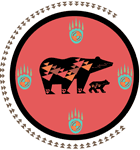A recent development in child psychology has been progress in indigenous theories of American Indian and Alaska Native child development. In one example of programmatic application of these theories, Gilgun provides an integrative use of a Native American medicine wheel with Western developmental concepts of belonging, mastery, independence, and generosity as catalysts to encourage adults to provide affirmation, guidance, and modeling in a youth out-of-home care program. These theories advance local cultural understandings of the developmental pathways, notions of health and resilience, and the process of change and healing of children and youth in response to intervention. Cultural interventions are a recent development emerging from this progress in indigenous child development theory. Cultural interventions take the next step in innovation to address the disparities in service utilization and outcome by grounding the cultural practices comprising the intervention within an indigenous theoretical system relevant and appropriate to the local setting. The cultural activities that comprise the cultural interventions are thereby linked through indigenous theory to culturally normative developmental trajectories, cultural protective factors, and indigenous understandings of change processes. This chapter describes two examples of this next stage in the development of interventions for American Indian/Alaska Native youth. One project, the Elluam Tungiinun (meaning 'toward wellness'), is a cultural program for the prevention of youth suicide and alcohol abuse, behavioral health intervention program for Lakota youth with serious emotional disturbance. (PsycINFO Database Record (c) 2016 APA, all rights reserved)
This website is supported by Grant Number 90CZ0034-01-00 from the Children’s Bureau within the Administration for Children and Families, a division of the U.S. Department of Health and Human Services. Neither the Administration for Children and Families nor any of its components operate, control, are responsible for, or necessarily endorse this website (including, without limitation, its content, technical infrastructure, and policies, and any services or tools provided). The opinions, findings, conclusions, and recommendations expressed are those of the author(s) and do not necessarily reflect the views of the Administration for Children and Families and the Children’s Bureau.

